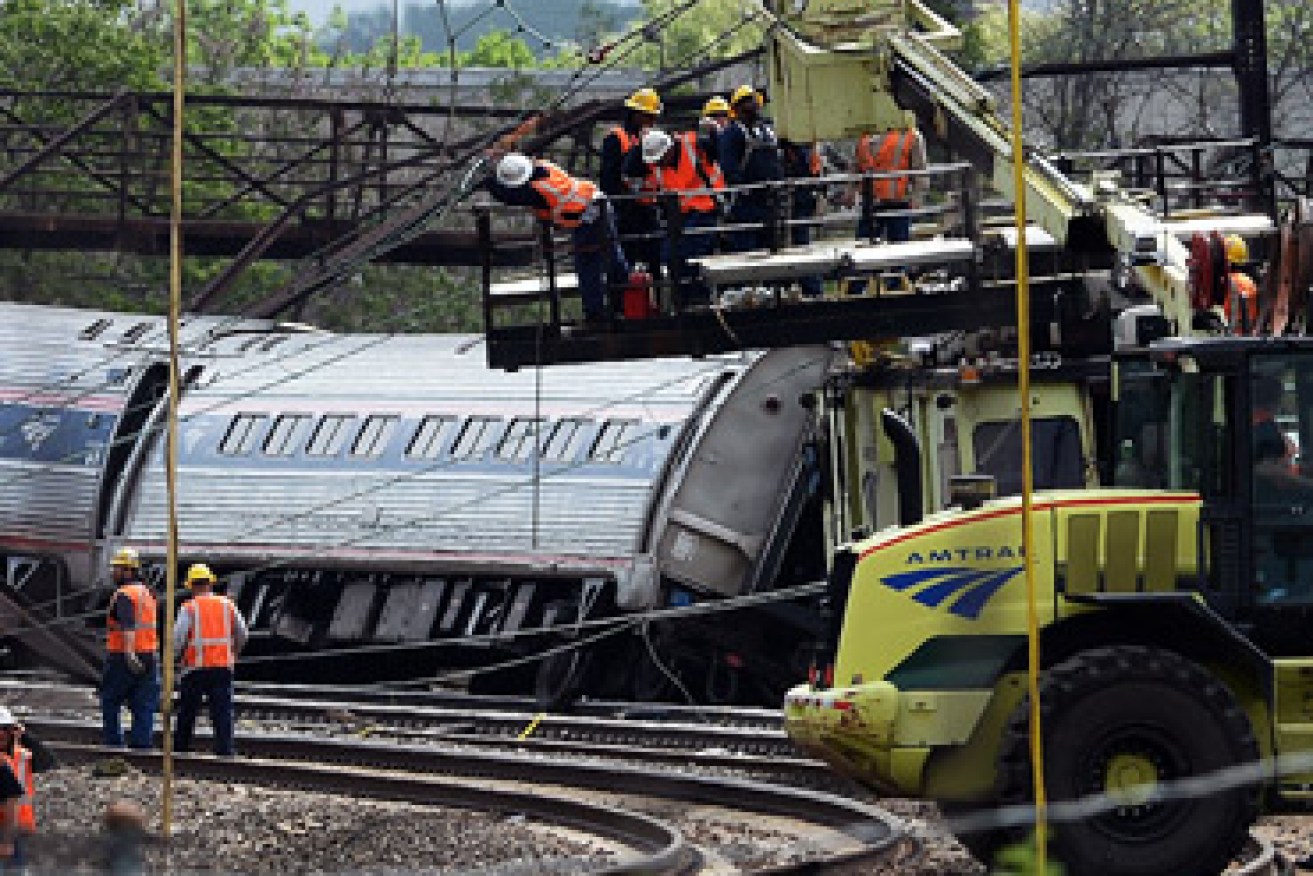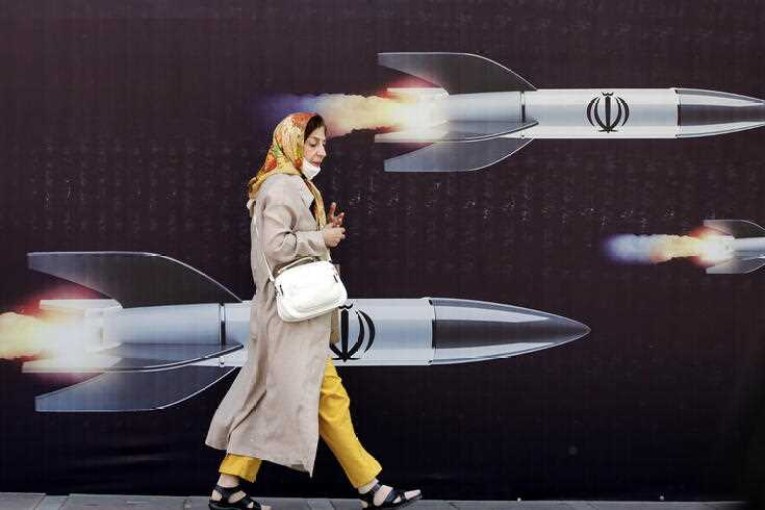‘Excessive speed to blame’: train crash investigators

Getty
The death toll from the derailment of a US passenger train in Philadelphia stands at seven, after investigators concluded excessive speed around a curved stretch of track caused the crash.
More than 200 people were injured in the crash along the busy north-east US rail corridor linking Washington and New York, one of the most travelled in the Amtrak network.
Authorities have offered no explanation for why the No.188 train, which originated in Washington DC, and had stopped in Philadelphia’s 30th Street station about 20 minutes earlier, was travelling at more than double the authorised speed.
• Seven killed in New York train derailment
• Philippine factory fire toll rises passes 70
• Australia doesn’t make top 10 in global school rankings
Rail service was disrupted after the incident about 9:30pm Tuesday (local time), leaving travellers scrambling for alternatives.
Amtrak said 243 people, including a crew of five, were on board the train.
Authorities have not yet accounted for everyone believed to have been on board, and have encouraged anyone who may have left the scene without being counted to contact Amtrak.

Emergency personnel work the scene of a deadly train wreck in Philadelphia. Photo: AAP
Hours after launching their probe into the cause of the accident, experts from the National Transportation Safety Board (NTSB) also concluded the derailment would have been prevented by installation of an advanced safety system called “positive train control,” NTSB board member Robert Sumwalt said.
The engineer of the New York City-bound passenger train fully applied the locomotive’s emergency braking system as it entered the left-hand curve in the rail line, where the maximum allowed speed is 80 km per hour, Mr Sumwalt said.
He said the brakes managed to only slightly slow the train from 171 kilometres per hour to 164 kph in the few seconds before the locomotive and all seven passenger cars derailed.
Philadelphia mayor Michael Nutter reacted with dismay to the disclosure of the train’s speed, calling it “astounding, devastating”.
“106 miles per hour in a 50 mile-per-hour zone … that’s just insane,” the mayor said.
Mr Sumwalt said data from the “black box” recorder recovered at the crash site had yet to be fully analysed, and investigators also planned to examine video footage from forward-facing cameras attached to the train.
He said the NTSB team expected to remain on the crash scene, in north Philadelphia’s Port Richmond section along the Delaware River, for about a week.
In addition to speed, the NTSB has said it was focusing on the condition of the tracks and signalling equipment, crew training and the performance of the five-person crew.
A city official identified the train’s driver as Brandon Bostian, a University of Missouri graduate who has worked as an Amtrak engineer for more than four years and previously served as a conductor for the railway, according to his LinkedIn page.
Mr Bostian was released from Einstein Medical Centre after being treated for his injuries, hospital spokesman Damien Woods said.
Concerns over ageing rail infrastructure, human factors
The crash seemed likely to heighten moves to expand positive train control, or PTC systems, designed to prevent high-speed derailments.
No such system was in effect at the site of the Amtrak crash, officials said.

Rescuers work around derailed carriages of an Amtrak train in Philadelphia. Photo: Getty
Positive train control automatically slows or even halts trains moving too fast or heading into a danger zone.
Under current US law, the rail industry must adopt the technology by the end of the year.
But the crash came a day before the House Appropriations Committee approved a transportation budget for the next fiscal year that included a funding cut for Amtrak.
One amendment proposed by Democrats called for $US825 million in capital investments in PTC technologies for passenger rail, but it was blocked by the Republican majority.
Both Republicans and Democrats supported the measure, which will now go to the Senate floor.
“This accident is exhibit A for ending the delays and getting PCT in place,” Senator Richard Blumenthal, a Connecticut Democrat, said.
The NTSB’s Mr Sumwalt said: “We feel that had such a system been installed in this section of track, this accident would not have occurred.”
The wreck was expected to renew concerns about the state of the ageing US rail infrastructure, but it also called into question the role of human factors in train accidents.
An NTSB investigation into the deadly Metro-North Railroad derailment that killed four people in the New York borough of the Bronx last year found engineer William Rockefeller had a serious sleep disorder known as sleep apnoea.
A contributing factor in that high-speed crash was the railroad’s failure to screen engineers for the problem and the failure of federal regulators to require such periodic testing, the NTSB said.
Amtrak has begun installing components of a PTC system but the network is not yet functioning, federal officials said.








